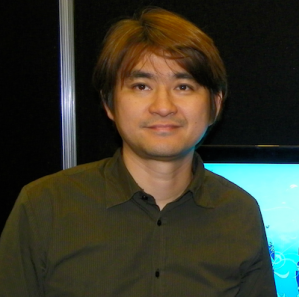Nothing entertains more than a good “BEST EVAR!!!!11!!!!1!” argument. Video games have been around more than three decades, making it the latest medium to incite impassioned debate about what example of the form reins supreme over everything else.
More than a month ago, the Smithsonian Museum of American Art announced that the public itself would be able to vote on what to include in their upcoming The Art of Video Games exhibit. Gamers everywhere hammered the dedicated website the Smithsonian set up for voting, promptly crashing it while trying to make sure their favorite games got into the exhibit. Artofvideogames.org got back on its feet, though, and the Smithsonian recently extended the voting deadline by one week, which lets even more folks chime in on the games that they think everyone needs to know about.
More than 3.3 million votes from nearly 110,000 people decided the final; of course, every vote was secret. Nevertheless, you have to wonder how the people who make games themselves chose from the 240 offerings on the ballot. I wondered the same thing and, over the last few weeks, I’ve asked some of video games’ most respected creators which titles deserve to be enshrined in next year’s exhibit. In person and over e-mail, designers and game-makers thought long and hard on their answers and you’ll find them collected here.
Voting in The Art of Video Games ballot was, in a way, like assembling a desert-island list of gameplay experiences vital to understanding just what makes video games so great. When asked about the exhibit, Jordan Mechner, creator of the beloved Prince of Persia franchise, said, “So much press attention is devoted to video games as a business and pop-culture phenomenon: what’s selling, how much money is being made, etc. I think it’s great to focus attention on games as an art form, because that’s what players experience and ultimately it’s what we value and remember.”
So, if you want to know which games the man who saved Duke Nukem Forever from a vaporware fate values or the title that one of the main architects of Gears of War remembers, all you have to do is read on.
 Cliff Bleszinski, design director, Epic Games; creator/designer, Gears of War franchise
Cliff Bleszinski, design director, Epic Games; creator/designer, Gears of War franchise
Super Mario Brothers. There were so many classic Nintendo games, but I’d have to go with the original Super Mario Brothers. Entire generations’ lives were changed just by the time you finished World 1-1.
Limbo. It’s such an exercise in subtlety. At Epic, we’re very on the nose with the kind of games we make, but Limbo asks something of the user. It asks them to put themselves in this world. It asks them to solve puzzles that were just tricky enough. I think your average person can see the visual style of Limbo. They can see the puzzles, and anybody can empathize with a lost boy.
 Jordan Mechner, creator/designer, Prince of Persia (1988) and creator/writer, Prince of Persia: The Sands of Time (2001)
Jordan Mechner, creator/designer, Prince of Persia (1988) and creator/writer, Prince of Persia: The Sands of Time (2001)
Ico. [Note: Ico wasn’t on the list of nominated games.] This 2001 PlayStation 2 game is a real work of art. It creates a powerful atmosphere of loneliness and vulnerability, and a human, emotional bond with the princess character, Yorda, whom the player must protect. This relationship is built through gameplay, sound and music, and sensitive attention to detail in the animation and AI that most games don’t bother with. All those little touches add up to a believable game world. Ico‘s coherence and integrity were a huge inspiration to me and the team in creating Prince of Persia: The Sands of Time.
 Greg Zeschuk, co-founder of BioWare, co-creator of Dragon Age and Mass Effect franchises
Greg Zeschuk, co-founder of BioWare, co-creator of Dragon Age and Mass Effect franchises
Tetris. [Note: Tetris wasn’t on the list of nominated games.] It defined video games for so many people, people who weren’t already playing them in some other way. It’s so approachable but complex at the same time and still holds the power to keep you captive.
Doom. There were other first-person shooters before it but the success of this title is a seminal moment that changed gaming. The way that the guys at id Software created atmosphere to fuel the way people played was a big leap in the craft of making games.
Super Mario 64. It showed what you could do in a 3D environment and felt incredibly freeing. Really, it brought the idea of adventure to a new scale. Games today owe a lot to this one.
 Raph Koster, VP of Creative Design, Playdom; designer, Ultima Online and Star Wars Galaxies
Raph Koster, VP of Creative Design, Playdom; designer, Ultima Online and Star Wars Galaxies
M.U.L.E. It offered a deep, entertaining multiplayer experience that was also non-violent, and profoundly social. It requires a kind of strategy that remained unique, too. There was a whimsy there, too, that was forward-looking. And all of this in 1983. The underpinning philosophy provided a template that we lost and are now just rediscovering for the mass market.
 Tim Schafer, President/CEO of Double Fine Productions; creator, Psychonauts, Brutal Legend
Tim Schafer, President/CEO of Double Fine Productions; creator, Psychonauts, Brutal Legend
Super Mario 64. We take it for granted now, but it wasn’t so long ago that this game let players really explore a 3D environment for the first time. It was just as important that it was also filled with fun, inventive gameplay ideas and wasn’t just because they could do it.
Ico. From top to bottom, it’s just a work of art. The way it looked, the way it created a bond between the player and the Yorda character and, man, that ending.
Okami. From the minute it starts, you’re dropped into this beautiful, captivating world that you want to interact with.
Katamari Damacy. It’s not just that the way you play this game is crazy, but it all happens in this crazy, bat-s**t world, too. Once you play, you don’t ever forget it.
 Marty O’Donnell, Bungie; composer, Halo franchise
Marty O’Donnell, Bungie; composer, Halo franchise
Ico. Thinking that Yorda was dead was a heartbreaker. I cried at what I thought was the ending and then again when I got the real ending. One of my co-workers just turned the game off when the credits started rolling and came in the next day wondering what all the fuss was about. We all told him, “Tonight, when you get back to your place, just let the credits roll. Turn off the phone and close the laptop. He thanked us all the next day.”
 Tetsuya Mizuguchi, President/CEO, Q? Entertainment; creator/designer, Rez, Child of Eden
Tetsuya Mizuguchi, President/CEO, Q? Entertainment; creator/designer, Rez, Child of Eden
Shadow of the Colossus. It’s a beautiful game that really took you on a journey and made you feel so many things. You felt love, loneliness, grief and power. You also feel regret, too. Being able to feel so many emotions in just one game is a great achievement.
 Randy Pitchford, CEO, Gearbox Studios; creator/designer Brothers in Arms franchise, Borderlands
Randy Pitchford, CEO, Gearbox Studios; creator/designer Brothers in Arms franchise, Borderlands
The Colossal Cave Adventure. It predates Zork and is probably the first text adventure ever created. In fact, that game was an inspiration for an entire generation of game-makers, including all of those early pioneers on the 286 and Atari and Atari ST, and the early Apple games and stuff.
It’s been a long time but I remember that it was awesome. You’d play on a computer and you just get a paragraph of text that would describe some environment that you were in, and from that your mind would create the image. It was like reading a great book but it was interactive.
So it was like the first time we really felt like that kind of interactivity. It was the first open-world game really, in that you could chart your own path, but it didn’t use graphics. It was a big deal. I think we’re going to tend to bias towards the modern industry. But Colossal Cave was, like, one of the first things for computer gaming and computer programmers on personal computers.
 Ken Levine, Creative Director, Irrational Games; creator/designer, BioShock, BioShock Infinite
Ken Levine, Creative Director, Irrational Games; creator/designer, BioShock, BioShock Infinite
Ultima Underworld. You have to have that there. That’s a game that inspired me most of any game ever made, with how it created a world that you can explore in 3D. Just the experience of being in that dungeon felt really real to me.
Civilization. I’ve played different versions of it for 20 years now. Those games take the scope of history and tries to encapsulate it into a gaming experience, which is amazing. The series deals with issues you don’t normally see, like how guns actually change the course of society and history. I just felt it was incredible experience and we’re still playing it 20 years later.
Grand Theft Auto 3. It’s there because it was just such a realized world. And I care about realized worlds. GTA3 just transports you. It’s a time travel experience.
The Legend of Zelda. That was probably the first game that to me felt like–because of the combination of an overworld and dungeons–it wasn’t just a linear experience. It was a world you could go around and explore. So powerful and unlike anything else. If you go back to gaming at that time, there’s just nothing even in the universe like it.
Adventure. The original game on the Atari looks like a very crude undertaking now. I would play that game forever just because again, it was a world unto itself. I’m just going with games that make worlds for you that you can explore and feel consistent in their design. Adventure to me was the first time I was like, whoa, wait a minute, it’s just not scroll from left to right. They’re telling you to explore, and there are tools you find, and improvisation you can do. I just love all that stuff.

